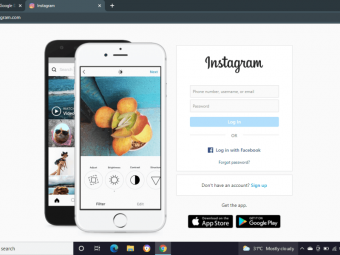How To Get An A In Accounting Lessons From The Log Cabin
Tags: Financial Accounting
Learn the complete accounting cycle -recording business transactions to presenting the Balance Sheet & Income Statement
Last updated 2022-01-10 | 4.1
- Identify the accounting principles and the role of accounting in sustainable business organizations- Measure and record balance sheet and income statement elements in organizations
- Be able to get an "A" in your college or University Introductory Financial Accounting course.
What you'll learn
* Requirements
* The excel spreadsheet files will be provided.Description
This is an introductory financial accounting course that covers all the financial accounting concepts offered in an introductory financial accounting course at university or college.
Financial accounting is the process of recording, summarizing and reporting a company's business transactions through financial statements. These statements are: the income statement, the balance sheet, the cash flow statement and the statement of retained earnings.
Learn and Master the Financial Accounting Process.
Understand that accounting is the language of business.
Know business terminology (biz speak).
Understand the difference between a corporation and a single proprietorship.
Know the three forms of business - service company, merchandise company and a manufacturer.
Understand an Income Statement and how to prepare one.
Understand a Balance Sheet and how to prepare one.
Know how to analyse and record business transactions
Learn how to use debits and credits to record business transactions.
Know how to use the accounting journal and ledger,
Complete a set of accounting records for a service business using excel spreadsheets.
Complete a set of accounting records for a merchandise company using excel spreadsheets.
Understand LIFO and FIFO.
Understand how to use the accounting system for Internal Control.
Understand the different methods of depreciation.
This is one of the best courses I have gone through. My finance knowledge has increased to large extent. Sonalika Sood
Who this course is for:
- College and university business students
- Secondary school students taking a bookkeeping or accounting course in high school.
- Entrepreneurs who want a good understanding of basic accounting.
Course content
26 sections • 48 lectures
Why take accounting? Preview 02:30
Introduction to accounting Interactive lecture Preview 00:50
Interactive exercises and problems Preview 00:25
Financial Accounting overview Preview 02:20
Three Types of Business organizations Preview 03:37
Business Activities overview Preview 02:49
Accounting Terms
Know the Language
Quiz on Business forms
Lecture - Introduction to Financial Statements Preview 00:50
In this lecture we are introduced to the income statement and the statement of retained earnings. I would like you to think of the income statement as a report from the company on their operations for a particular period of time.
Some new terms
Profitability is the ability to generate income. Solvency is the ability to pay debts as they become due.
The financial statement that reflects a company’s profitability is the income statement.
The statement of retained earnings shows the change in retained earnings between the beginning and end of a period (e.g. a month or a year).
The balance sheet reflects a company’s solvency and financial position
Test your understanding of financial statements Preview 00:25
Classified Balance Sheet Preview 00:50
Classified Balance Sheet questions Preview 00:00
Test your understanding - MC Questions
Accounting Language
Know the language of Business
Test your Understanding of Financial Statement
Deepen your understanding
Lecture 1 - Understanding Business Transactions and how to record them Preview 14:59
Understand business transactions and how to record the effect of each transaction on the balance sheet equation
Excel Case - Jarvis Consulting Preview 14:30
Interactive exercises on Analyzing Business Transactions Preview 00:25
Business Transactions
Try these problems
Lecture - Debits and Credits Preview 06:57
In a previous section, I illustrated the income statement, statement of retained earnings, and balance sheet. These statements are the end products of the financial accounting process.
The raw data of accounting are business transactions.
You learned how to record transactions as increases or decreases in the assets, liabilities, and stockholders' equity items of the accounting equation. This procedure showed you how various transactions affected the accounting equation.
An account is a part of the accounting system used to classify and summarize the increases, decreases, and balances of each asset, liability, stockholders' equity item, dividend, revenue, and expense.
To illustrate recording the increases and decreases in an account, texts use the T-account, which looks like a capital letter T. The name of the account, such as Cash, appears across the top of the T. We record increases on one side of the vertical line of the T and decreases on the other side.
Test your understanding on debits & Credits
Problems to deepen your understanding
Interactive exercises Preview 00:01
Lecture on Recording Business Transactions in the Journal Preview 15:53
Interactive lecture on Recording Business Transactions Preview 00:50
Test your understanding
Test your Understanding on Journal Entries
Practice these journal Entries
Adjusting the Accounting Records Preview 17:35
Adjusting entries are journal entries made at the end of an accounting period or at any time financial statements are to be prepared to bring about a proper matching of revenues and expenses.
Adjusting entries fall into two broad classes: deferred (meaning to postpone or delay) items and accrued (meaning to grow or accumulate) items. Deferred items consist of adjusting entries involving data previously recorded in accounts. These entries involve the transfer of data already recorded in asset and liability accounts to expense and revenue accounts, respectively. Accrued items consist of adjusting entries relating to activity on which no data have been previously recorded in the accounts.
How the accountant uses the worksheet Preview 05:53
The work sheet is a columnar sheet of paper or a computer spreadsheet on which accountants summarize information needed to make the adjusting and closing entries and to prepare the financial statements. Usually, they save these work sheets to document the end-of-period entries. A work sheet is only an accounting tool and not part of the formal accounting records. Therefore, work sheets may vary in format; some are prepared in pencil so that errors can be corrected easily. Other work sheets are prepared on personal computers with spreadsheet software. Accountants prepare work sheets each time financial statements are needed—monthly, quarterly, or at the end of the accounting year.
Closing the Books Preview 07:52
In a previous Section, you learned that revenue, expense, and dividends accounts are nominal (temporary) accounts that are merely subclassifications of a real (permanent) account, Retained Earnings. You also learned that we prepare financial statements for certain accounting periods. The closing process transfers (1) the balances in the revenue and expense accounts to a clearing account called Income Summary and then to Retained Earnings and (2) the balance in the Dividends account to the Retained Earnings account. The closing process reduces revenue, expense, and Dividends account balances to zero so they are ready to receive data for the next accounting period.
Accountants may perform the closing process monthly or annually. The Income Summary account is a clearing account used only at the end of an accounting period to summarize revenues and expenses for the period.
After this video I would like you to follow through with me a demonstration problem - Lopez Delivery. In the demo I will demonstrate the accounting cycle.
First print off the Demo problem, journal sheet and T accounts and try and journalise the transactions post to the T and come up with a trial balance. Then go through the videos Step1, Step 2&3 and Step 4 &5.
Test your understanding on adjusting entries
Problems on adjusting entries
Test your understanding Questions on need for Adjusting Entries
Test your understanding on adjusting and closing
Test your understanding on the Accounting Cycle
Fraser's Golf Academy Preview 00:54
Accounting Case - Fraser's Golf Academy Preview 01:43
A complete set of accounting records in excel will be in the next video
Fraser's Excel accounting records Preview 00:50
Lecture - Accounting Theory Preview 10:26
Accounting theory is "a set of basic concepts and assumptions and related principles that explain and guide the accountant's actions in identifying, measuring, and communicating economic information".
Understanding the theory behind the accounting process, however, helps one make decisions in diverse accounting situations. Accounting theory provides a logical framework for accounting practice.
Test your understanding on Accounting Theory
Lecture on Recording Purchase Transactions Preview 12:57
In this section of the course we look at recording the business transactions of a merchandising company. Merchandisers sell goods. Goods can be returned or discounted - unlike services.
You are introduced to some new accounts such as sales, sales returns and allowances, sales discounts, cost of goods sold, inventory, perpetual inventory system, periodic inventory system and gross profit.
Recording Merchandise Purchases Preview 00:50
Lecture #2- Recording Sales Transactions Preview 07:43
In this section of the course we look at recording the business transactions of a merchandising company. Merchandisers sell goods. Goods can be returned or discounted - unlike services.
You are introduced to some new accounts such as sales, sales returns and allowances, sales discounts, cost of goods sold, inventory, perpetual inventory system, periodic inventory system and gross profit.
Recording Merchandise sales Preview 00:01
Test your understanding of Merchandise operations
Test your understanding
Excel problem - Curtain Co Preview 00:29
Classified income Statement Preview 00:50
A classified income statement divides both revenues and expenses into operating and non-operating items. The statement also separates operating expenses into selling and administrative expenses. A classified income statement is also called a multiple-step income statement.
A classified income statement has the following four major sections:
The classified income statement shows important relationships that help in analyzing how well the company is performing. For example, by deducting cost of goods sold from operating revenues, you can determine by what amount sales revenues exceed the cost of items being sold. If this margin, called gross margin, is lower than desired, a company may need to increase its selling prices and/or decrease its cost of goods sold. The classified income statement subdivides operating expenses into selling and administrative expenses. Thus, statement users can see how much expense is incurred in selling the product and how much in administering the business.
Test your understanding of Merchandise operations
Problems to deepen your understanding








 This course includes:
This course includes:
![Flutter & Dart - The Complete Guide [2022 Edition]](https://img-c.udemycdn.com/course/100x100/1708340_7108_5.jpg)















